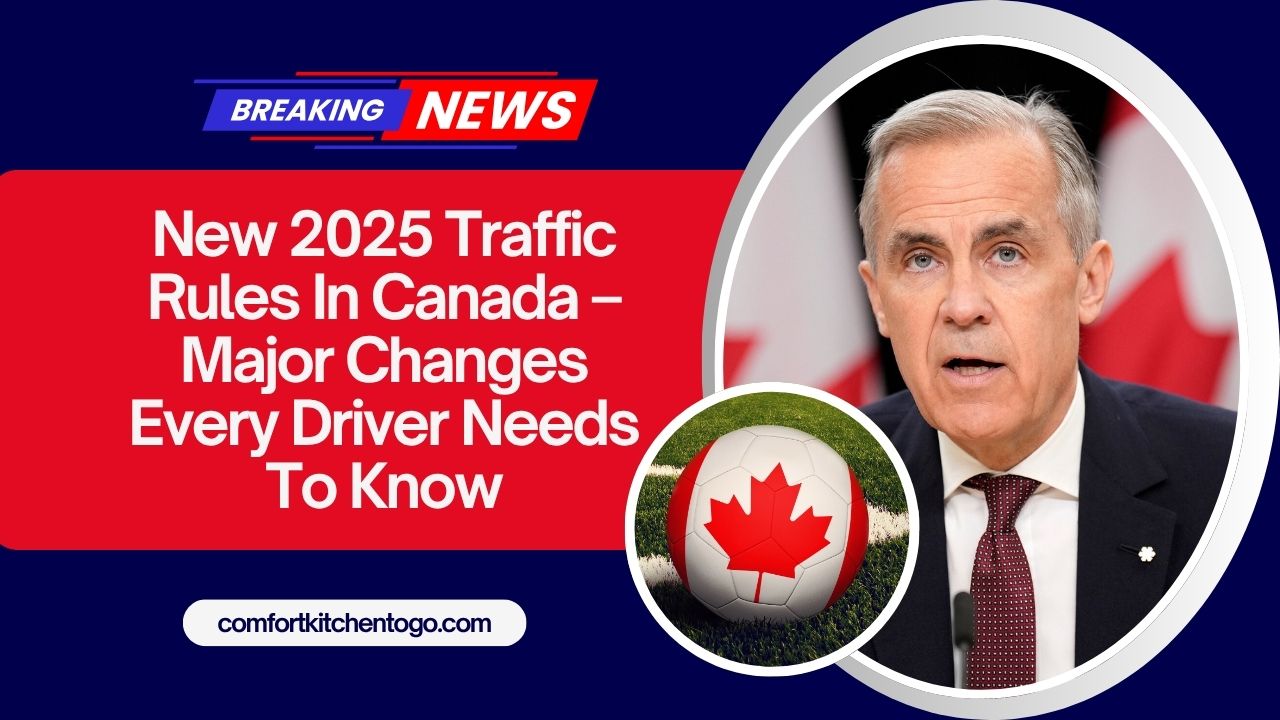Beginning July 1, 2025, Canada is rolling out its most comprehensive traffic law reform in years under the New Canada Driving Law 2025. This sweeping overhaul brings stricter regulations, modern safety protocols, and enhanced penalties aimed at making roads safer, reducing accidents, and adapting to the modern realities of driving.
From mandatory advanced vehicle systems to lowered impaired driving thresholds, these changes will affect all drivers, whether you’re behind the wheel of a personal vehicle or operating a commercial fleet.
Let’s break down the key updates in this 800-word guide to everything Canadian drivers must know in 2025.
What Is the 2025 Canada Driving Law?
The new law is a nationwide initiative designed to:
- Minimize road fatalities
- Promote the use of advanced vehicle safety tech
- Crack down on distracted and impaired driving
- Adapt to environmental and automation challenges
Enforcement begins July 1, 2025, and failure to comply may result in fines, license suspensions, or even imprisonment for severe offenses.
Key Changes Every Driver Must Know
1. Mandatory Advanced Driver-Assistance Systems (ADAS)
All new vehicles sold from July 2025 onward must be equipped with:
- Adaptive cruise control
- Lane-keeping assistance
- Automated emergency braking
Older vehicles are not required to upgrade, but incentives will be offered to retrofit ADAS systems.
2. Stricter Distracted Driving Laws
| Aspect | New Rule (2025) |
|---|---|
| Smart Devices | Smart glasses and wrist-wearables now count as distractions |
| Phone Use | Full ban on handheld phones (even at red lights) |
| Hands-Free Allowance | Only Bluetooth or wireless earpieces allowed |
| Penalties for Injury | Up to 10 years jail time |
| Penalties for Fatality | Up to 14 years imprisonment |
3. Lowered Impaired Driving Thresholds
In response to rising cannabis- and alcohol-related crashes, two major changes apply:
- BAC Limit lowered from 0.08 to 0.05 in provinces like Alberta and Quebec.
- Roadside test kits now detect both alcohol and THC simultaneously.
Enhanced police roadside enforcement will make testing quicker and more accurate.
4. Expanded Pedestrian Protection Zones
New law mandates federally designated high-risk pedestrian zones:
- Focus on areas with high foot traffic or past incident rates
- Enhanced enforcement beyond local jurisdictions
- Higher penalties for failing to yield to pedestrians
5. Impact on Commercial Drivers
Commercial and freight vehicle operators must now follow:
- Updated Hours of Service (HOS) regulations
- Mandatory GPS-tracked Electronic Logging Devices (ELDs)
- Stricter fatigue violation rules
Non-compliance will lead to:
- Fines
- Mandatory retraining
- Possible license suspension
6. Eco-Driving Education Requirement
To align with climate goals, Canada now requires eco-driving training for anyone seeking rebates on zero-emission vehicles (ZEVs). You must:
- Complete a government-approved course
- Learn techniques like regenerative braking, smooth acceleration, and efficient route planning
This step can help you qualify for up to $7,500 in combined federal and provincial rebates.
7. Connected and Automated Vehicles (CAVs) Regulation
Transport Canada has launched a national framework for CAV integration:
| Component | Details |
|---|---|
| Cybersecurity Standards | CAV systems must be secured against hacking |
| Testing Protocols | Uniform rules for automated system verification |
| Public Awareness | Nationwide campaign to educate on CAV safety & limits |
These measures aim to create trust in autonomous vehicle technology while ensuring public road safety.
Canada 2025 Traffic Law Overhaul
| Category | 2025 Change |
|---|---|
| Vehicle Safety | ADAS mandatory in all new vehicles |
| Distracted Driving | Expanded definitions and harsher penalties |
| Impaired Driving | BAC limit reduced to 0.05; dual-mode roadside kits |
| Pedestrian Zones | National high-risk pedestrian zones expanded |
| Commercial Drivers | New fatigue rules, GPS ELD tracking |
| Eco Driving | Mandatory training for ZEV rebates |
| Connected Vehicles | CAV framework with security and public education |
Canada’s 2025 traffic law reform marks a major shift in road safety enforcement. With changes spanning vehicle technology, distracted driving, and commercial compliance, every driver must stay informed. Failing to follow the new rules could result in fines, penalties, or imprisonment. Stay compliant and drive responsibly starting July 1, 2025.
FAQs
When do the new traffic laws take effect in Canada?
The new driving rules take effect nationwide starting July 1, 2025, under the New Canada Driving Law 2025.
Do older vehicles need to be upgraded with ADAS?
No, but the government is offering incentives for drivers who voluntarily retrofit ADAS technology.
What is the new legal BAC limit in 2025?
The BAC limit is being lowered from 0.08 to 0.05 in provinces like Alberta and Quebec to prevent impaired driving.

